What Is Yin Yoga? Everything You Need to Know
Yin Yoga is a slow-paced and meditative form of yoga that targets the connective tissues, such as ligaments, tendons, and fascia, rather than focusing primarily on muscle engagement. In Yin Yoga, poses are held for an extended period, ranging from 3 to 5 minutes or even longer. This prolonged duration allows practitioners to relax into postures, applying gentle stress to the connective tissues.
The practice aims to improve flexibility, joint mobility, and energy flow, particularly along the meridian lines of traditional Chinese medicine. Emphasizing stillness and mindfulness, Yin Yoga encourages self-awareness and a deep release of physical and mental tension. It is well-suited for individuals seeking a contemplative practice that complements more dynamic forms of yoga, promoting balance and overall well-being.
PLAN OF THE ARTICLE :
– Factors to consider while doing Yin yoga


Yin Yoga definition and benefits
1. Deep Tissue Stimulation:
Yin Yoga targets connective tissues, reaching areas like ligaments and fascia. This gentle stress stimulates these tissues, promoting flexibility and reducing stiffness.
2. Improved Joint Flexibility:
Holding poses for an extended period allows joints to move through their full range of motion. This can enhance joint flexibility and prevent stiffness, especially in the hips and spine.
3. Mindful Relaxation:
Yin Yoga encourages a meditative and mindful approach. Holding poses for an extended time fosters mental relaxation, reduces stress, and promotes a sense of calm and presence.
4. Balanced Energy Flow:
The practice stimulates energy flow along meridian lines, as per traditional Chinese medicine. This can help balance the body’s energy, enhancing overall well-being and vitality.
5. Stress Reduction:
Yin Yoga promotes the release of tension, both physical and mental. The emphasis on stillness and deep breathing triggers the parasympathetic nervous system, reducing stress and promoting relaxation.

6. Enhanced Circulation:
The extended holds in yin poses may improve blood circulation. This can positively affect organ function, nutrient delivery, and cardiovascular health.
7. Greater Body Awareness:
Holding poses encourages practitioners to tune into their bodies. This heightened awareness can lead to a better understanding of physical sensations, emotions, and areas of tension, fostering a holistic connection.
8. Complementary to Yang Practices:
Yin Yoga complements more dynamic or “yang” yoga and other physical activities. The practice counterbalances by targeting deeper tissues and promoting recovery and flexibility.
9. Stimulates Collagen Production:
The stress applied to connective tissues during Yin Yoga may stimulate collagen production. This can contribute to joint health, skin elasticity, and overall tissue resilience.

10. Emotional Release:
Holding poses for an extended period may evoke emotional responses. This allows practitioners to explore and release stored emotions, contributing to mental and emotional well-being.
11. Enhanced Focus and Mind-Body Connection:
The meditative nature of Yin Yoga enhances mental focus and concentration. Connecting breath with stillness deepens the mind-body relationship, promoting overall mindfulness.
12. Accessible for All Ages:
Yin Yoga is accessible to individuals of various fitness levels and ages. Its gentle nature makes it suitable for beginners and those seeking a more contemplative practice.
Incorporating Yin Yoga or restorative yoga into a wellness routine offers many benefits, promoting physical flexibility, mental relaxation, and overall mind-body harmony.

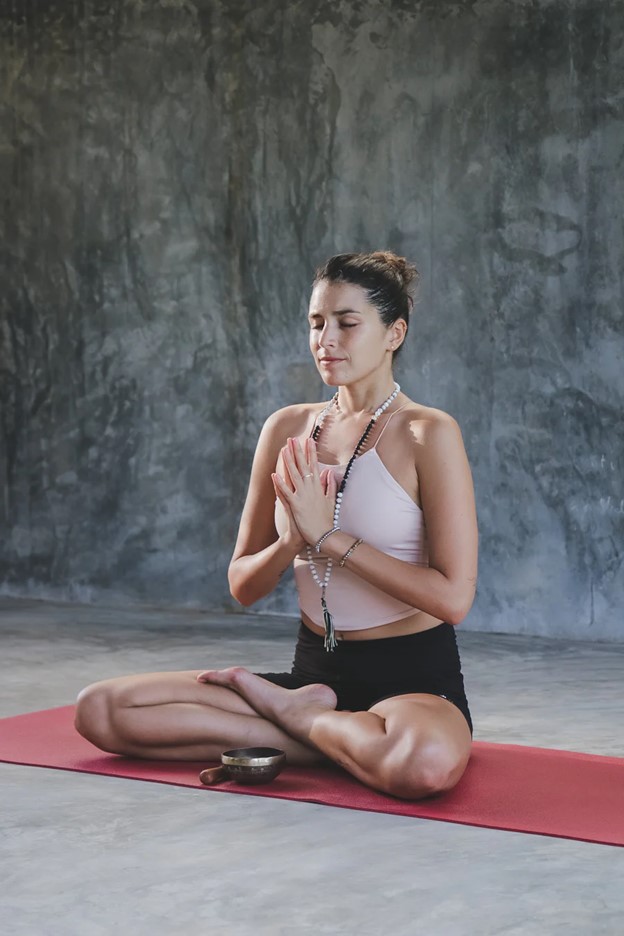
Yin yoga Asanas
1. Child’s Pose (Balasana):
– Targets the hips, thighs, and ankles.
– Encourages relaxation and stretches the spine.

2. Dragon Pose (Yin Low Lunge):
– Stretches the hip flexors and groin.
– Encourages deep hip opening and flexibility.
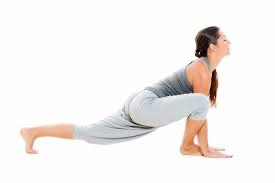
3. Butterfly Pose (Baddha Konasana):
– Targets the inner thighs and groins.
– Encourages a gentle stretch in the hips and lower back
.
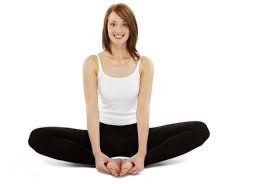
4. Sphinx Pose:
– Stretches the abdomen and opens the chest.
– Promotes mild back bending to stimulate the spine.
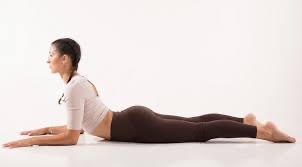
5. Seal Pose:
It’s similar to Sphinx Pose but involves a deeper backbend.
– Stretches the spine and opens the chest and shoulders.
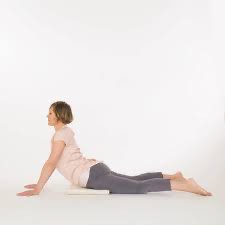
6. Melting Heart Pose (Anahatasana):
– Stretches the upper back and shoulders.
– A variation of Child’s Pose, focusing on heart opening.

7. Saddle Pose (Supported Reclining Hero Pose):
– Stretches the thighs, knees, and ankles.
– Encourages flexibility in the quadriceps and hip flexors
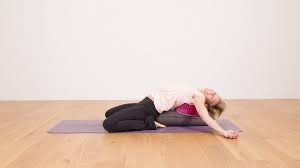
8. Square Pose (Gomukhasana):
– Targets the hips, thighs, and shoulder
– Promotes external rotation of the hip joints.
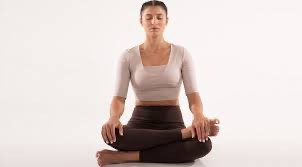
9. Banana Pose:
– Stretches the side body.
– Encourages a lateral stretch, promoting flexibility along the torso.
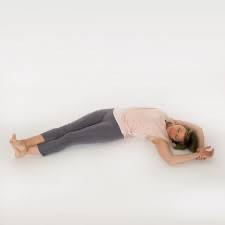
10. Caterpillar Pose:
– Targets the spine, hamstrings, and lower back.
– Promotes a forward fold for stretching the entire back body.
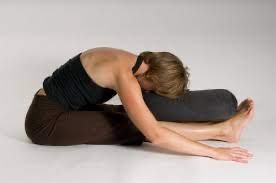
11. Toe Squat (Hero Pose with Toes Tucked):
– Stretches the tops of the feet and ankles.
– Encourages flexibility in the ankle joints.

12. Wall Yin:
– Various yin poses can be modified and practised with support from a wall.
– Wall Yin poses allow for a gentle stretch and relaxation with added support.
Remember to hold each yin yoga poses (10.86)for an extended period, typically 3 to 5 minutes or longer, focusing on deep breathing and surrendering into the stretch. These poses aim to target the deep connective tissues ,(8.8) promoting flexibility, relaxation, and a sense of balance in the body’s physical and energetic aspects.


Factors to consider while doing Yin yoga
1. Duration of Poses:
Yin yoga styles involves holding poses for an extended period, typically 3 to 5 minutes or more. Patience is essential to allow the body to adapt and release tension gradually.
2. Comfort and Prop Use:
Ensure comfort in each pose. Use props like bolsters, blankets, or blocks to support the body and prevent strain, allowing for a deeper and more sustainable stretch.

3. Gentle Approach:
Approach Yin poses with a gentle mindset. Avoid pushing the body too hard and focus on surrendering to each stretch, respecting your body’s limits.
4. Breath Awareness:
Maintain a steady and mindful breath throughout the practice. Deep, slow breaths help calm the nervous system and enhance the meditative aspect of yin yoga.
5. Body Alignment:
Pay attention to proper alignment in each pose. This ensures that the stress is applied to the intended areas, promoting a safe and effective stretch.
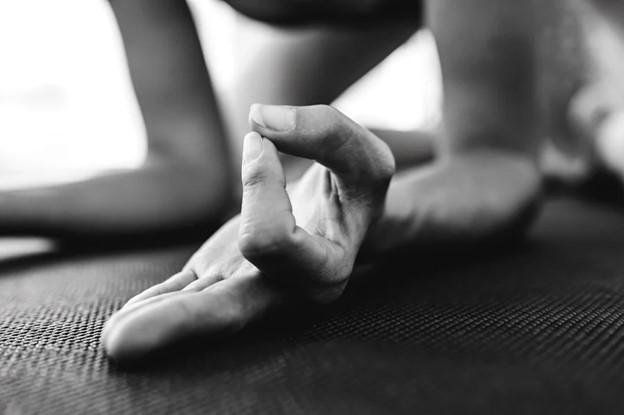
6. Release of Tension:
Allow the muscles to relax completely in each pose. The goal is to target connective tissues, so muscular tension should be minimized to experience the full benefits of yin yoga.
7. Consistency:
Regular practice is key to experiencing the long-term benefits of yin yoga. Consistency helps improve flexibility, joint mobility, and overall mind-body awareness.
8. Mindful Meditation:
Embrace the meditative quality of yin yoga. Use the practice as an opportunity for self-reflection, mindfulness, and cultivating a peaceful state of mind.
9. Individual Variation:
Recognize that everyone’s body is different. Each person may experience poses uniquely, so focus on your sensations and variations, adjusting as needed.
10. Hydration:
– Stay hydrated before and after the practice. Hydration supports the suppleness of connective tissues and helps flush out toxins released during stretching.
11. Warm-Up:
Begin with a gentle warm-up to prepare the body for yin poses. This can include light movement and stretching to increase blood flow and flexibility.
12. Post-Practice Comfort:
Take time in a comfortable resting pose or meditation after a yin yoga session. This allows the body to absorb the benefits and helps transition smoothly from stillness to activity.
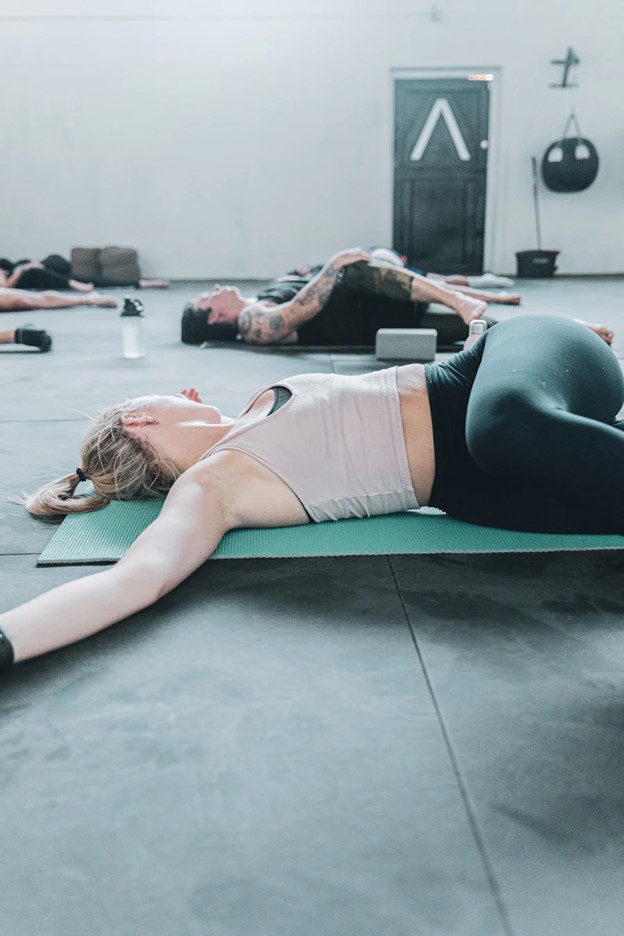
History of Yin Yoga
Yin Yoga is a style of yoga that delves deep into the body and mind, offering a unique and transformative approach to the ancient practice of yoga. With its emphasis on long holds, passive poses, and the stretching of connective tissues, Yin Yoga provides a counterbalance to the more dynamic and muscular-focused forms of yoga such as Vinyasa and Hatha Yoga. Let’s take a closer look at the history, principles, benefits, and evolution of Yin Yoga.
The roots of Yin Yoga can be traced back to both traditional yoga practices in ancient India and Taoist principles in China. In ancient yoga traditions, practitioners would hold poses for extended periods of time to cultivate stillness, concentration, and awareness. Similarly, Taoist practices emphasize the concept of yin, which represents qualities such as receptivity, surrender, and patience. The fusion of these influences gave rise to the practice of Yin Yoga as we know it today.
In the modern era, Yin Yoga gained recognition and popularity through the teachings of influential figures such as Paulie Zink, Paul Grilley, and Sarah Powers. Paulie Zink, a martial arts expert, integrated yoga with martial arts movements, highlighting the importance of long-held poses to enhance flexibility and strength. Paul Grilley, a student of Paulie Zink, further refined the practice by focusing on the anatomical aspects of poses and their effects on the body’s connective tissues. He emphasized the need for individualized variations in poses and advocated for longer holds to target specific areas of the body.

Sarah Powers, another prominent teacher in the Yin Yoga community, brought mindfulness practices, meditation techniques, and breathwork into the practice. By incorporating these elements, she encouraged students to cultivate presence, awareness, and acceptance in their practice, deepening the mind-body connection.
Yin Yoga classes today typically involve a series of poses held for several minutes each, often supported by props to aid relaxation and comfort. The practice challenges practitioners to find stillness, release tension, and explore the edges of their flexibility and comfort zones. By holding poses for longer periods, Yin Yoga targets the deeper connective tissues of the body, including ligaments, tendons, and fascia, promoting joint health, flexibility, and overall well-being.
One of the main principles of Yin Yoga is the concept of surrendering to the present moment and letting go of the need to constantly strive or achieve. This principle aligns with the Taoist philosophy of embracing the natural flow of life and finding balance between effort and ease. In Yin Yoga, the focus is on allowing the body to open gradually over time, rather than pushing or forcing it into a posture.
The benefits of a regular Yin Yoga practice are numerous and profound. Physically, Yin Yoga helps improve flexibility, joint mobility, and posture, while also stimulating the flow of energy (chi) throughout the body. Emotionally and mentally, the practice can promote relaxation, stress relief, and a sense of inner calm. By cultivating mindfulness and presence on the mat, practitioners can carry these qualities into their daily lives, enhancing their overall well-being and resilience.
As Yin Yoga continues to evolve and gain popularity, more teachers and practitioners are exploring its therapeutic benefits for various conditions, including chronic pain, stress-related disorders, and emotional imbalances. The practice has also been recognized for its ability to complement other forms of yoga and physical activities, offering a balanced and holistic approach to health and wellness.

Wrapping up
Yin Yoga is a profound practice that goes beyond physical flexibility, delving into mental serenity and holistic well-being. The intentional holding of poses and emphasis on connective tissues offer a unique avenue for deep stretching, increased flexibility, and improved energy flow. The meditative nature of Yin Yoga or style of yoga(10.74) fosters mindfulness, allowing practitioners to cultivate self-awareness and a tranquil state of mind. Its gentle approach, focus on breath, and encouragement of surrender contribute to stress reduction and emotional balance. As a complement to more dynamic forms of yoga, Yin Yoga provides a harmonizing counterbalance, making it a valuable practice for those seeking a holistic journey towards physical and mental equilibrium.

➡️ I am a Yoga teacher, meditator and wellness professional . I wrote many articles about well being, retreats, Yoga and spirituality :
– How to practice transcendental meditation
And way more ! Check it out on our website . Just type search bar 🔍 with the topic you want to explore

WHO AM I ?
Hello !
I am Eric, a French Australian citizen based between Australia, Asia and Bali and I love to travel and experience the world. I generally like outdoor activities, wellness, great food and venues , party and real local adventures ! I am a Yoga practitioner and fitness lover
I created this blog because I love to travel and I want to share my experiences with others. I’ve been traveling since I was a child, and I’ve been to over 50 countries. I’ve seen some amazing things and met some amazing people, and I want to help others experience the same things.
I believe that travel is one of the best ways to learn about the world and about yourself. When you travel, you’re forced to step outside of your comfort zone and experience new things. You learn about different cultures, different religions, and different ways of life. You also learn about yourself, your strengths, and your weaknesses.
Travel can also be a great way to make new friends. When you’re traveling, you’re surrounded by people from all over the world, and you’re all in the same boat. You’re all there to explore and experience new things, and that can create a bond between people.
Let’s connect together !
I hope that my travel blog will inspire others to travel and to see the world. I also hope that it will help people to learn about different cultures and to become more open-minded.

![70 Daily Best Positive Affirmations for Men [2025]](https://funkyfreshtravels.com/wp-content/uploads/2024/05/Picture1-31.jpg)
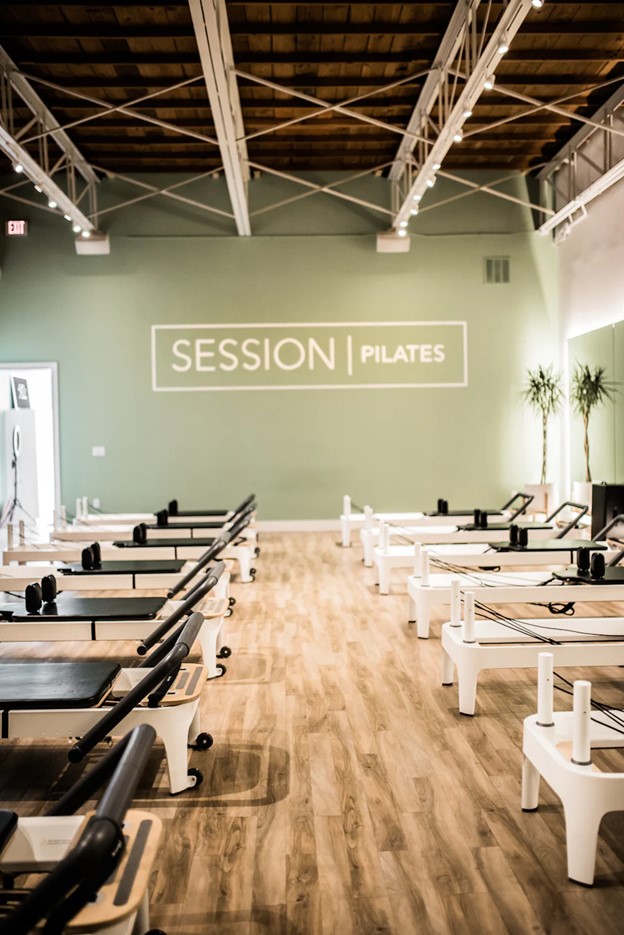
![Mantras for Burning Sage: Prayers and Full Process [2025]](https://funkyfreshtravels.com/wp-content/uploads/2024/05/Picture23-14.jpg)


![What Is Yoga? Definition, Philosophy, Types, Benefits [2025]](https://funkyfreshtravels.com/wp-content/uploads/2024/05/Picture1-32.jpg)